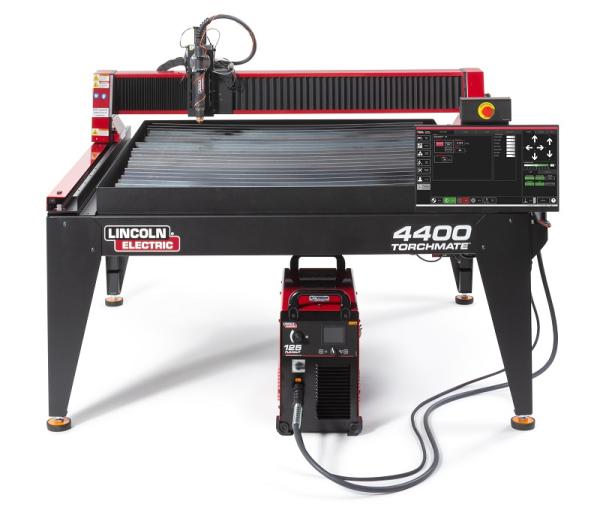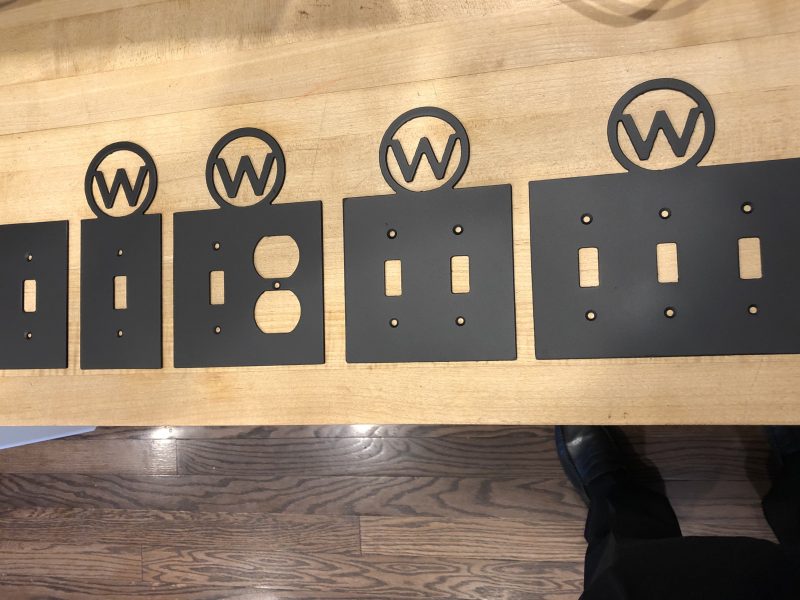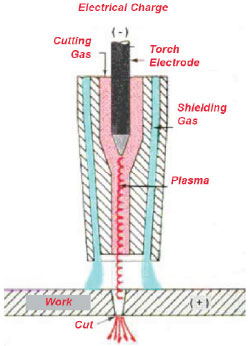Table of Contents
- Frequently Asked Questions
- What is a CNC plasma cutting machine?
- What are the basic steps to operate a CNC plasma cutting machine?
- What are some safety precautions to take when operating a CNC plasma cutting machine?
- What are some common problems that can occur when operating a CNC plasma cutting machine?
- What skills are required to operate a CNC plasma cutting machine?
Are you interested in learning how to operate CNC plasma cutting machines? If so, you’ve come to the right place! With the increasing demand for efficient and precise metal cutting, mastering the use of CNC plasma cutting machines can be a valuable skill that opens up many opportunities in the industry.
If you’re new to CNC plasma cutting, don’t worry! This guide will provide a step-by-step explanation of how to operate the machine, including safety precautions, basic settings, and techniques for achieving high-quality cuts. By the end of this guide, you’ll have a solid understanding of how to use a CNC plasma cutting machine and the confidence to take on projects of your own. So, let’s get started!
- Turn on the power supply of the CNC plasma cutting machine.
- Move the cutting torch to the starting point of the material to be cut.
- Set the cutting parameters, such as the cutting speed, cutting depth, and gas pressure.
- Start the cutting process and monitor it to ensure the quality of the cut.
- After the cutting process is finished, turn off the power supply and clean the machine.
How to Operate CNC Plasma Cutting Machine?
If you are using a CNC plasma cutting machine for the first time, it can be a little intimidating. However, with proper guidance, you can easily operate it and create precise cuts in no time. In this article, we will guide you through the process of operating a CNC plasma cutting machine.
1. Safety First
The first thing you need to do before operating a CNC plasma cutting machine is to ensure your safety. You should wear protective gear, including gloves, goggles, and a mask. You should also ensure that the machine is installed in a well-ventilated area to avoid inhaling fumes.
It is also essential to check the machine’s safety features before use. Ensure that the machine’s emergency stop button is within reach, and you know how to use it. Finally, ensure that the machine is in good working condition and all parts are in place.
2. Material Preparation
The next step is to prepare the material you will be cutting. You should ensure that the material is clean and free from debris. You should also check the material’s thickness and ensure that it is within the machine’s cutting capacity.
If the material is too thick, the machine may not be able to cut it, and if it is too thin, it may warp during the cutting process. It is also essential to secure the material to the machine’s cutting table to prevent it from moving during the cutting process.
3. Machine Setup
After preparing the material, the next step is to set up the machine. You should first turn on the machine and allow it to warm up for a few minutes. This will ensure that the machine is at the right temperature for cutting.
You should then set the cutting parameters, including the cutting speed and torch height. It is also essential to ensure that the machine is properly grounded to prevent electrical shock.
4. Programming the Machine
Most CNC plasma cutting machines come with software that allows you to program the machine. You should use this software to create a cutting program that specifies the cutting path, cutting speed, and torch height.
You can either create the program yourself or import a design from CAD software. Once you have programmed the machine, you can save the program for future use.
5. Starting the Cutting Process
Before starting the cutting process, you should ensure that the cutting table is clear of any debris. You should also check the torch height and ensure that it is set correctly.
To start the cutting process, you should press the start button on the machine’s control panel. The machine will then follow the cutting program you created and cut the material accordingly.
6. Monitoring the Cutting Process
It is essential to monitor the cutting process to ensure that everything is going as planned. You should watch the machine carefully and check that the torch is cutting the material correctly.
You should also monitor the cutting speed and adjust it if necessary. If you notice any issues, such as the torch not cutting correctly, you should stop the machine and troubleshoot the problem.
7. Cleaning the Machine
After the cutting process, you should clean the machine to ensure that it remains in good working condition. You should remove any debris from the cutting table and clean the torch and other parts of the machine.
You should also check the machine’s consumables, including the cutting tip and electrode, and replace them if necessary. This will ensure that the machine is ready for the next use.
8. Benefits of Using a CNC Plasma Cutting Machine
Using a CNC plasma cutting machine offers several benefits. Firstly, it allows you to create precise cuts quickly and easily. It also reduces the risk of errors and wastage, as the machine follows a programmed cutting path.
Additionally, CNC plasma cutting machines are versatile and can cut a wide range of materials, including steel, aluminum, and copper. They are also cost-effective, as they require minimal maintenance and produce less waste.
9. CNC Plasma Cutting Machine vs. Other Cutting Methods
Compared to other cutting methods, such as laser and waterjet cutting, CNC plasma cutting is more cost-effective. It is also faster and can cut thicker materials than laser cutting.
While waterjet cutting offers more precise cuts, it is more expensive and slower than CNC plasma cutting. Overall, CNC plasma cutting offers a good balance between speed, precision, and cost-effectiveness.
10. Conclusion
Operating a CNC plasma cutting machine may seem daunting at first, but with proper guidance, it is a straightforward process. By following the steps outlined in this article, you can operate the machine safely and create precise cuts with ease.
Remember to prioritize safety, prepare the material properly, set up the machine correctly, program the machine, monitor the cutting process, and clean the machine after use. By doing so, you can ensure that the machine remains in good working condition and produces accurate cuts every time.
Frequently Asked Questions
Here are some frequently asked questions about how to operate a CNC plasma cutting machine.
What is a CNC plasma cutting machine?
A CNC plasma cutting machine is a computer-controlled machine that uses a plasma torch to cut through various materials, including metal, wood, and plastic. The operator uses a computer program to guide the machine’s movements and control the depth and angle of the cut.
The machine is ideal for cutting out intricate shapes and designs, and it is commonly used in metalworking shops, fabrication plants, and other manufacturing facilities.
What are the basic steps to operate a CNC plasma cutting machine?
The basic steps to operate a CNC plasma cutting machine include loading the material onto the cutting table, setting up the program, turning on the machine, and initiating the cutting process. The operator must also monitor the machine during the cutting process to ensure that everything is running smoothly.
Other important steps include adjusting the cutting speed and torch height to achieve the desired cut quality, and cleaning and maintaining the machine regularly to keep it in good working condition.
What are some safety precautions to take when operating a CNC plasma cutting machine?
Some safety precautions to take when operating a CNC plasma cutting machine include wearing appropriate personal protective equipment, such as goggles, gloves, and a respirator. The operator should also be aware of the hazards associated with plasma cutting, such as the risk of electric shock, burns, and eye damage.
Other safety measures include ensuring that the machine is properly grounded, keeping the work area clean and free of clutter, and following all operating procedures and guidelines provided by the manufacturer.
What are some common problems that can occur when operating a CNC plasma cutting machine?
Some common problems that can occur when operating a CNC plasma cutting machine include poor cut quality, such as jagged edges or dross on the surface of the material. Other issues may include problems with the torch height or cutting speed, or issues with the computer program that controls the machine.
To address these problems, the operator may need to make adjustments to the cutting parameters, clean or replace the cutting tip, or troubleshoot the computer program to identify and correct any errors.
What skills are required to operate a CNC plasma cutting machine?
To operate a CNC plasma cutting machine, the operator should have basic computer skills, including the ability to use software programs to create and modify cutting patterns. The operator should also have a good understanding of cutting parameters, such as speed, height, and amperage, and be able to make adjustments as needed to achieve the desired cut quality.
Other important skills include the ability to troubleshoot and problem-solve when issues arise, and knowledge of safety procedures and best practices for plasma cutting.
In conclusion, operating a CNC plasma cutting machine can seem daunting at first, but with practice, it can become a valuable skill. Remember to always follow safety guidelines and wear appropriate protective gear. Familiarize yourself with the machine’s interface and software, and practice on scraps before cutting your final material. With patience and attention to detail, you can create precise and intricate cuts with ease.
Furthermore, keep in mind that different materials may require different settings and techniques. Take the time to research and experiment with various settings to achieve the desired result. Additionally, consider investing in quality consumables such as torches and nozzles to ensure consistent and clean cuts.
Lastly, don’t be afraid to seek guidance from experienced operators or attend training sessions to enhance your skills. With dedication and a willingness to learn, you can master the art of CNC plasma cutting and produce high-quality pieces for various applications.
Request a quote today!
[contact-form-7 id="1578" title="Contact form"]
Please compress the file into a ZIP or RAR file before uploading. Alternatively, send through your RFQ by email.
enquires@unitymanufacture.com





